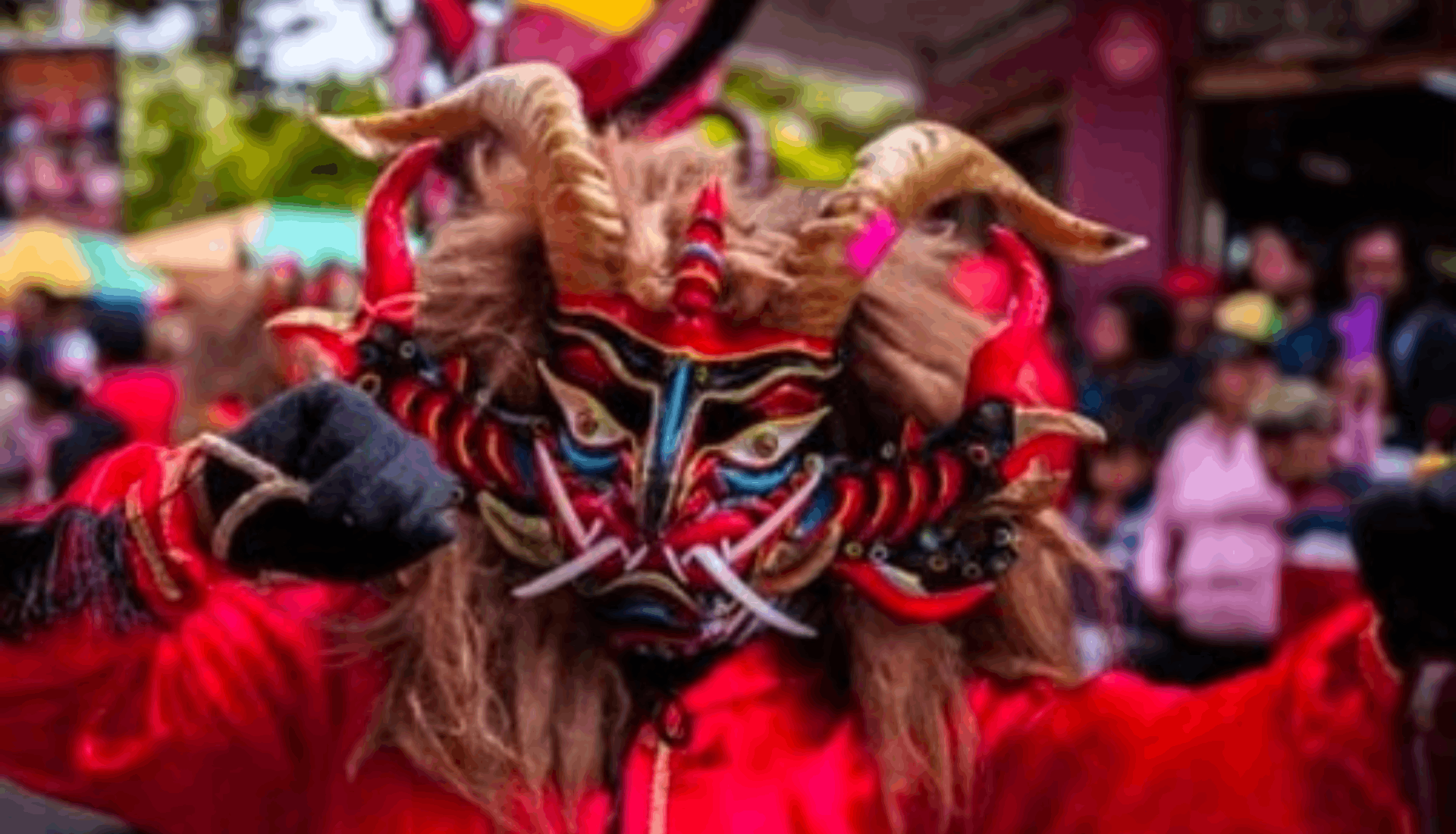
Diablada Pillareña
A dance, an awakening!
It is one of the popular festivals of Ecuador, this cultural manifestation, which in 2009 was declared Intangible Cultural Heritage of Ecuador, summons in January of each year thousands of people who participate in the so-called “partidas” or traditional troupes that tour, in the midst of dances and songs, the rural communities to the center of Píllaro. A tradition that was born during the colonial era and through time has evolved to be the festival that it is today, it extends from January 01 to 06 in which many people with exceptional costumes and masks of all sizes and shapes dance to the sound of village bands to purify their lives and start a different year full of many joys, forgetting the past and leaving behind the bad energies and being reborn.
How was the Diablada born?
There are several versions well known among the locals that have been passed down from generation to generation to this day, one could be said more extravagant, crazy and even unusual than the next, all of them are part of the local folklore and tradition, that is why here we decided to relate the most striking versions of the origin of the diablada.
The first of them tells us that during the conquest the locals, upon learning of the imminent arrival of the Spaniards to their lands, decided to disguise themselves as demons to scare them away and prevent their territory from being conquered.
The second version tells us that in each neighborhood of Píllaro the men dress up as devils to protect the women from being taken away or kidnapped by other suitors who try to steal their love.
The third story tells that, in colonial times, the Indians disguised themselves as devils in repudiation of priestly preaching and the physical, psychological, economic and moral mistreatment they received from the Spaniards.
Manufacture of the masks.
It takes between 15 and 30 days to assemble a mask, depending on the complexity of the design, the number of embellishments, and the size. It is decorated with horns, hair, teeth and skin from cattle and sheep. These materials are available year-round and can be obtained from local farmers.
Each mask is valued between $100 and $500, depending on the size; Their base is made up of a large amount of paper, cardboard and paste, and they are exhibited almost all year round in most workshops/homes where they are made.
What does the Diablada represent for its inhabitants?
As it is such an old tradition for each pillareño, it is their symbol of identity and they appropriate it because they identify it as a cultural heritage and year after year they try to make it more spectacular and special for all the tourists who visit them during these dates.
It is said that the devils of old wore fringed or zig-zag shorts, an azial and a kickstand, they wore live animals or skins on their heads. Finding out who was behind the mask in the Plaza 24 de Mayo led to clashes with whips.
All the participants distributed or made up of devils, aruchicos, carishinas and dance to the sound of the music of the village band with santashpas, sajuanitos, capishcas and albazos.
What can we highlight about the holiday?
It is an event full of joy and we can see that in each of the dancers, the passion they invest so that their costume stands out above the others, even from the little ones they enjoy the diablada and are not afraid to show it to all the visitors who pass by their beautiful, place of friendly and warm people who make you feel like part of them during the Diablada de Píllaro, Definitely a place to visit during the start of the new year.
However, while in Ecuador and the Catholic world every January 6 the feast of the Three Wise Men is celebrated, in the canton of Píllaro, a folkloric and ancestral tradition is fulfilled that evokes and embodies paganism at its best.
Eye-catching and boisterous parades, tastings of typical dishes, artistic exhibitions, musical events, among other elements, are part of this festivity that takes place during the first 6 days of the year.
During the covid 19 pandemic, this colorful event had to be suspended from 2021 to 2023 due to sanitary measures to prevent the spread of the virus, once the national government and the WHO lifted the protocol measures for the health emergency, from October the planning of the party began and from December 25 to 29 the previous events began.
That is why this 2024 they were more unleashed than ever and it could be observed that in every corner there were dances, costumes, music and an abysmal number of tourists who filled the streets to be part of this great event.




